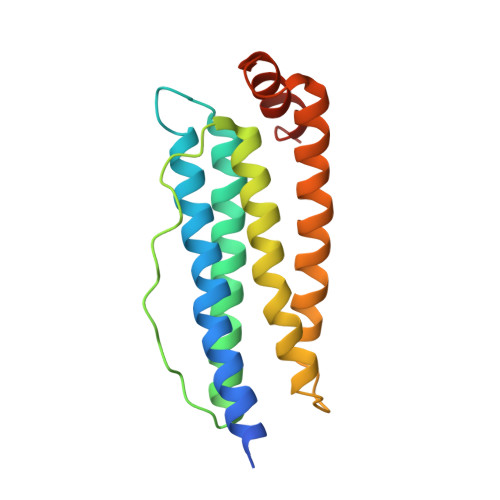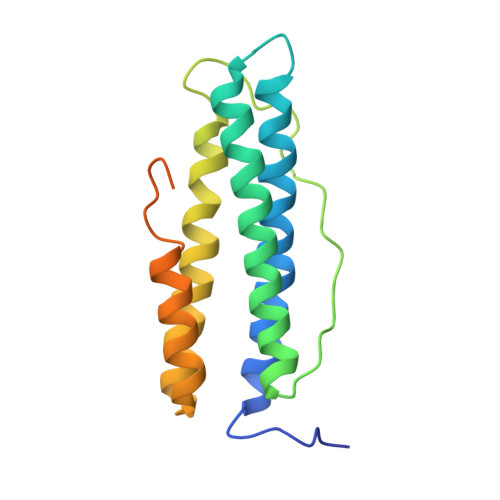Disulfide-mediated conversion of 8-mer bowl-like protein architecture into three different nanocages.
Zang, J., Chen, H., Zhang, X., Zhang, C., Guo, J., Du, M., Zhao, G.(2019) Nat Commun 10: 778-778
- PubMed: 30770832
- DOI: https://doi.org/10.1038/s41467-019-08788-9
- Primary Citation of Related Structures:
6IPC, 6IPO, 6IPP, 6IPQ, 6J7G - PubMed Abstract:
Constructing different protein nanostructures with high-order discrete architectures by using one single building block remains a challenge. Here, we present a simple, effective disulfide-mediated approach to prepare a set of protein nanocages with different geometries from single building block. By genetically deleting an inherent intra-subunit disulfide bond, we can render the conversion of an 8-mer bowl-like protein architecture (NF-8) into a 24-mer ferritin-like nanocage in solution, while selective insertion of an inter-subunit disulfide bond into NF-8 triggers its conversion into a 16-mer lenticular nanocage. Deletion of the same intra-subunit disulfide bond and insertion of the inter-subunit disulfide bond results in the conversion of NF-8 into a 48-mer protein nanocage in solution. Thus, in the laboratory, simple mutation of one protein building block can generate three different protein nanocages in a manner that is highly reminiscent of natural pentamer building block originating from viral capsids that self-assemble into protein assemblies with different symmetries.
Organizational Affiliation:
Beijing Advanced Innovation Center for Food Nutrition and Human Health, College of Food Science & Nutritional Engineering, China Agricultural University, Key Laboratory of Functional Dairy, Ministry of Education, 100083, Beijing, China.
















